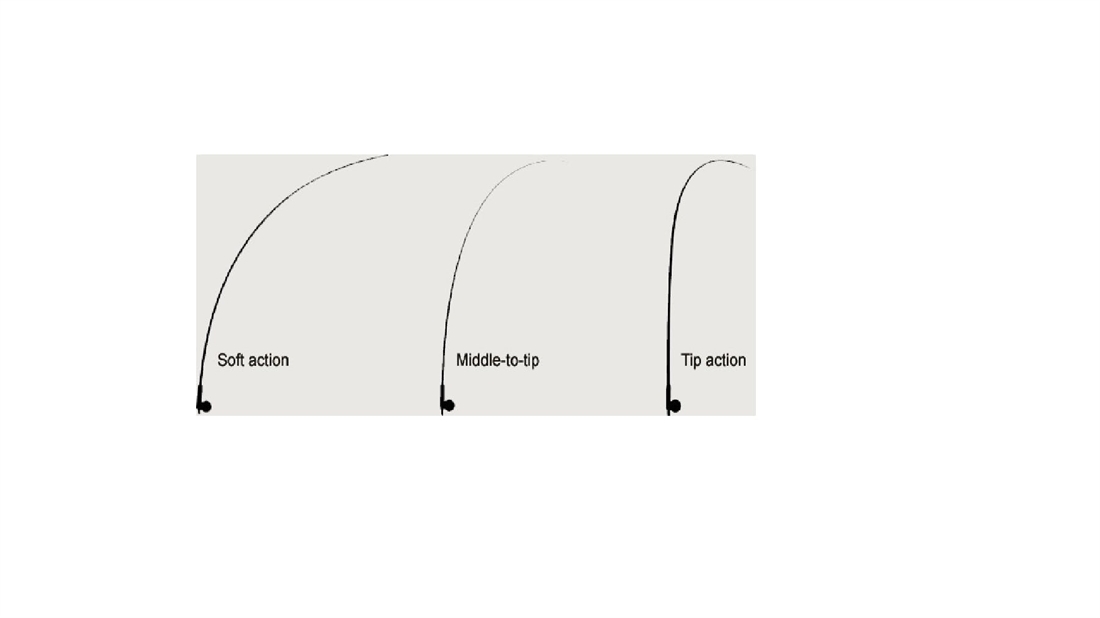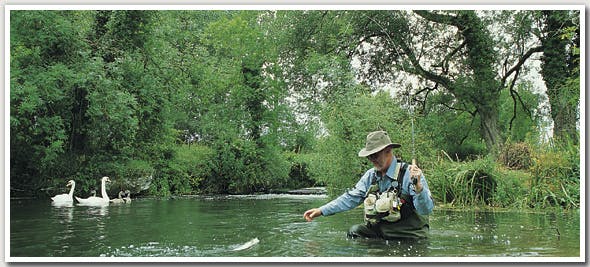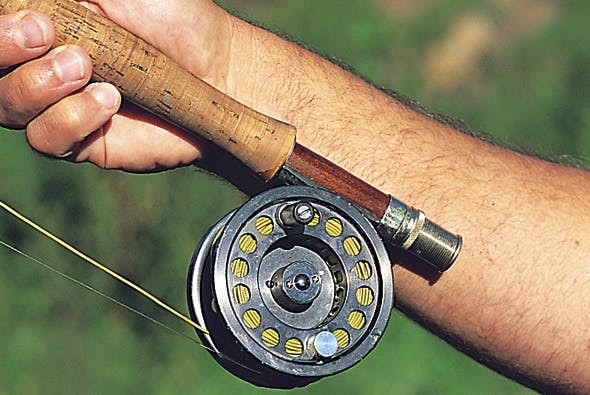PICKING THE RIGHT FLY ROD FOR RIVER TROUT FISHING

As a full-time casting instructor, I am lucky enough to fish with many different rods on a variety of venues over the season. I am amazed at how these rods differ in cosmetics and price, but, most importantly, how they “feel”. Selecting the correct rod for your fishing, and to suit your casting style, is of paramount importance. The right tool will feel like part of your arm, delivering well-formed loops and good presentation. The wrong rod spoils the whole experience.
SOFT OR THROUGH-ACTION
Rods are now described in many different terms. For example, a soft or through-action describes a blank, which flexes throughout its entirety, quite typical of the now out-of-fashion cane rod. Such rods are great for casting short distances with ease and protecting light leaders, but they don’t deliver the kind of power now possible with even a budget-priced carbon-fibre model.
MIDDLE-TO-TIP
A great majority of carbon rods can be described as “middle-to-tip” (doing exactly that, flexing mainly from the middle to the tip) and they provide comfortable casting, especially for those new to the sport. This action allows an angler to feel the rod loading nicely as the line straightens out on the back cast, and is a little more forgiving than a “fast” or “tip” action.
FAST OR TIP-ACTION
The fast action provides mega-high line speeds in the right hands, and the often-sought “tight loop”, but they are much less forgiving and, of course, the rod will only deliver such qualities when coupled with good technique. I have met many anglers who have upgraded from “softer” rods to an expensive American rod, such as a Sage or Loomis, which often possess this fast-action characteristic, only to be disappointed that it does not cast for them as they had hoped. Very often I find that these individuals parted with their hard-earned cash without so much as threading up their chosen rod. I ask this question: “Would you buy a new car without test-driving it first?” The only way to really find the right rod is to try a few, making varied casts including rolls, overheads and sides, and with differing lengths of lines.

A short rod will allow you to get into enclosed spaces
A ROD FOR RIVERS
So, you are planning to tackle the rivers; you have many endless hours of pleasure ahead. A great number of our river venues provide the only possibilities for truly wild fishing without heading to the highlands of Scotland or the Irish loughs.
To tackle these fish, everything has to be just right, and the 4/5 weight line that goes with the rod you suggest will ensure delicate presentation – although once again, only with good technique. Aim well above the water and allow the fly to land on a cushion of air as it fully extends.
In terms of length, 8ft 6ins is a good choice if most of your fishing is upstream with dry flies, or, if you are fishing Spider patterns downstream, the short length will allow you to get into enclosed spaces.
However, if you want a more versatile rod that will allow you to fish Czech nymph style easily, yet still has the finesse required to protect delicate leaders, I would opt for a 9ft rod taking a 5-weight line. Such a rod can also be used for small stillwater work, and can even be taken along for a bit of dry fly fun while reservoir fishing from a boat. For very small brooks, with heavy tree cover, I would go even shorter. On my Westcountry rivers I often opt for 8ft, or even 7ft 6ins.
So, have a think about the venues you will be fishing, decide on a rod length and then find a tackle shop that provides a “try before you buy” facility. Take out a bunch of rods and put them through their paces. Greys I can vouch for as an excellent brand, but the decision is yours. Rods are very personal and should fit like a glove, no matter what the clever marketing says!

Many rivers provide the only opportunity for truly wild fishing.






